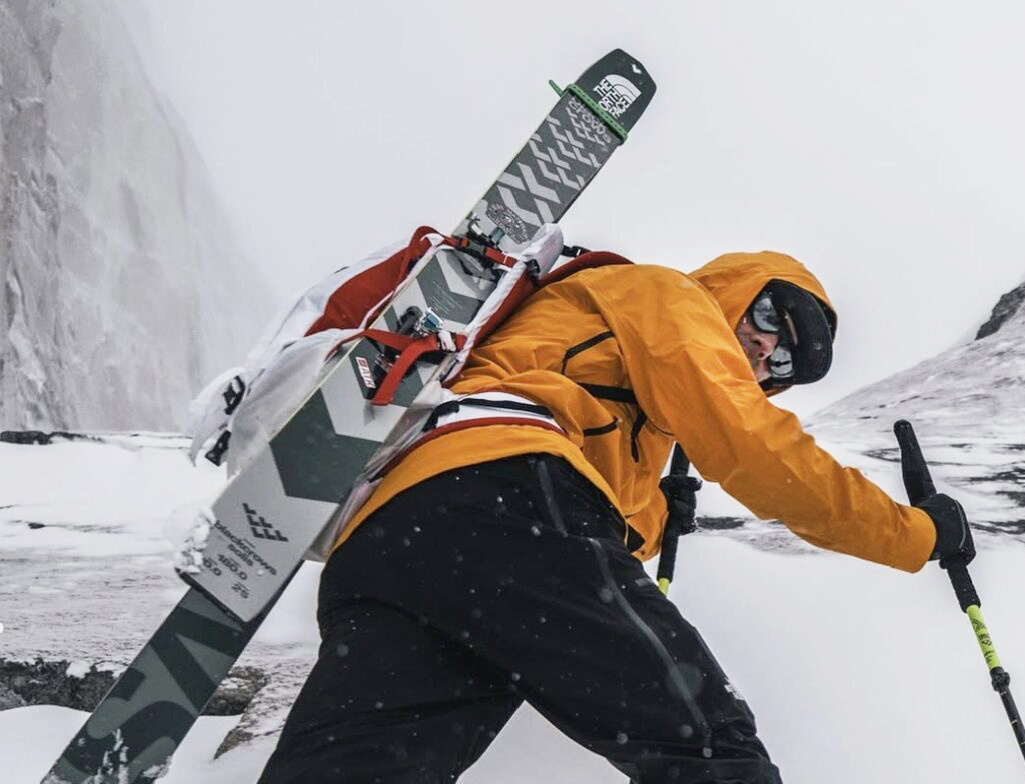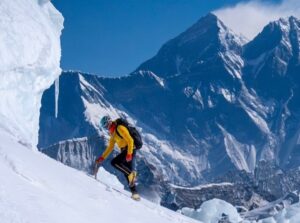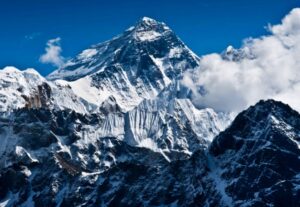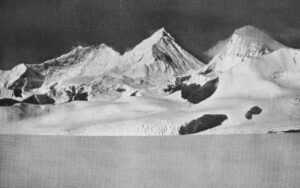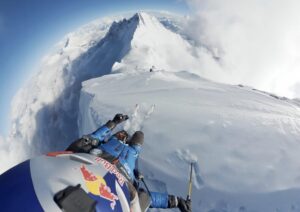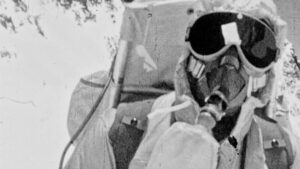Jim Morrison has made it! After reaching the summit of Everest this afternoon, the 50-year-old American has skied — and survived — the formidable Everest Superdirect route that links the Hornbein Couloir with the Japanese Couloir.
This marks the first time that the steep and avalanche-prone route has ever been skied or snowboarded. The last to try, snowboarder Marco Siffredi in 2002, died in the attempt, and his body was never found.

The direct Japanese Couloir/Hornbein Couloir line on the North Face of Everest. Photo: Animal de Ruta
Sponsor National Geographic released the news, noting that Morrison summited with 11 other climbers. There, he dispersed the ashes of his late partner, Hilaree Nelson, into the thin air. Morrison had promised to ski down the North Face of Everest as a tribute to Nelson, who had perished on Manaslu in 2022. He has kept his word.
The ascent…
In addition to Morrison, the climbing team included a strong Sherpa team. Among them was Yukta Sherpa, who had been injured in an avalanche during the 2024 attempt. With him as well were climber/filmmaker Jimmy Chin, 52, who is filming the feat, and Topo Mena, 35, of Ecuador, and his friend, Tico Morales, who helped fix the ropes up the Hornbein Couloir.
According to National Geographic, the team set out from Camp 4, pitched at some unspecified point on the North Face, at 6 am this morning, October 15, and stood on the summit at 12:45 pm local time.
“Only about five people have ever climbed the Japanese Couloir into the Hornbein, and we had 12 on the summit,” said Morrison.
Everyone in the team presumably used supplemental oxygen. There is no mention of whether Morrison used it or not.
…..and the descent
While the rest of the team started down clipped to the fixed ropes, Morrison stepped into his skis and began his descent shortly before 2 pm. He “spent the next four hours and five minutes carefully hop-turning and carving the icy 50-degree slope that descends a staggering 12,000 vertical feet [3,650m] back to the Rongbuk Glacier,” Morrison told National Geographic.
“The conditions were abominable,” he said.
“The crux pinch point of the couloir was bare rock, which required him to take off his skis and rappel about 650 feet, past Tom Hornbein and Willi Unsoeld’s spent yellow oxygen canisters from 1963, before putting his skis back on,” added National Geographic.
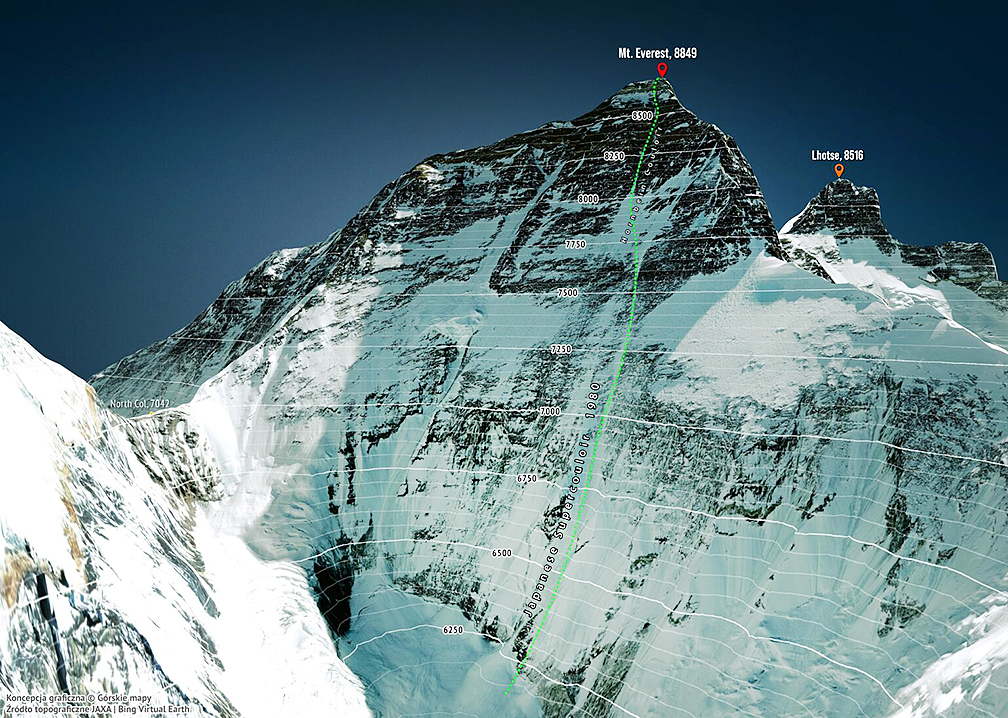
The line of descent, marked on a topo compiled by Gorskie Mapy.
Giant sastrugi
“While some sections were smooth enough for real turns, others were rutted and raised four feet up and down, like frozen waves,” said Morrison, describing the extreme sastrugi formed by violent winds.
Morrison had a short break in Camp 3 and then continued down, in apparently better snow conditions. When he finally reached the glacier at the base of Everest, he cried.
“I’d risked so much, but I was alive. It felt like a tribute to Hilaree — something she’d be proud of. I really felt her with me, cheering me on,” he said.
“His feat is easily the most audacious ski run in history,” National Geographic concluded. Morrison’s is also the first complete ski descent not only of the Everest Superdirect route, but of the entire North Side of the mountain. Before Marco Siffredi perished in 2002 attempting to snowboard the Hornbein, he succeeded in snowboarding the North Side of Everest via the Norton Couloir in 2001.
